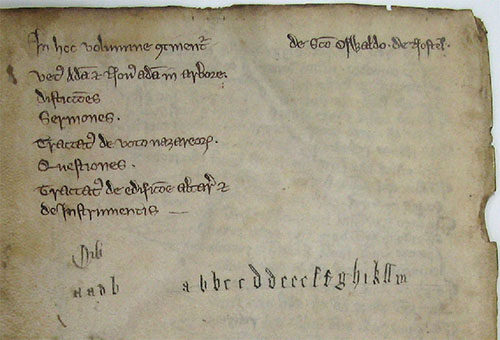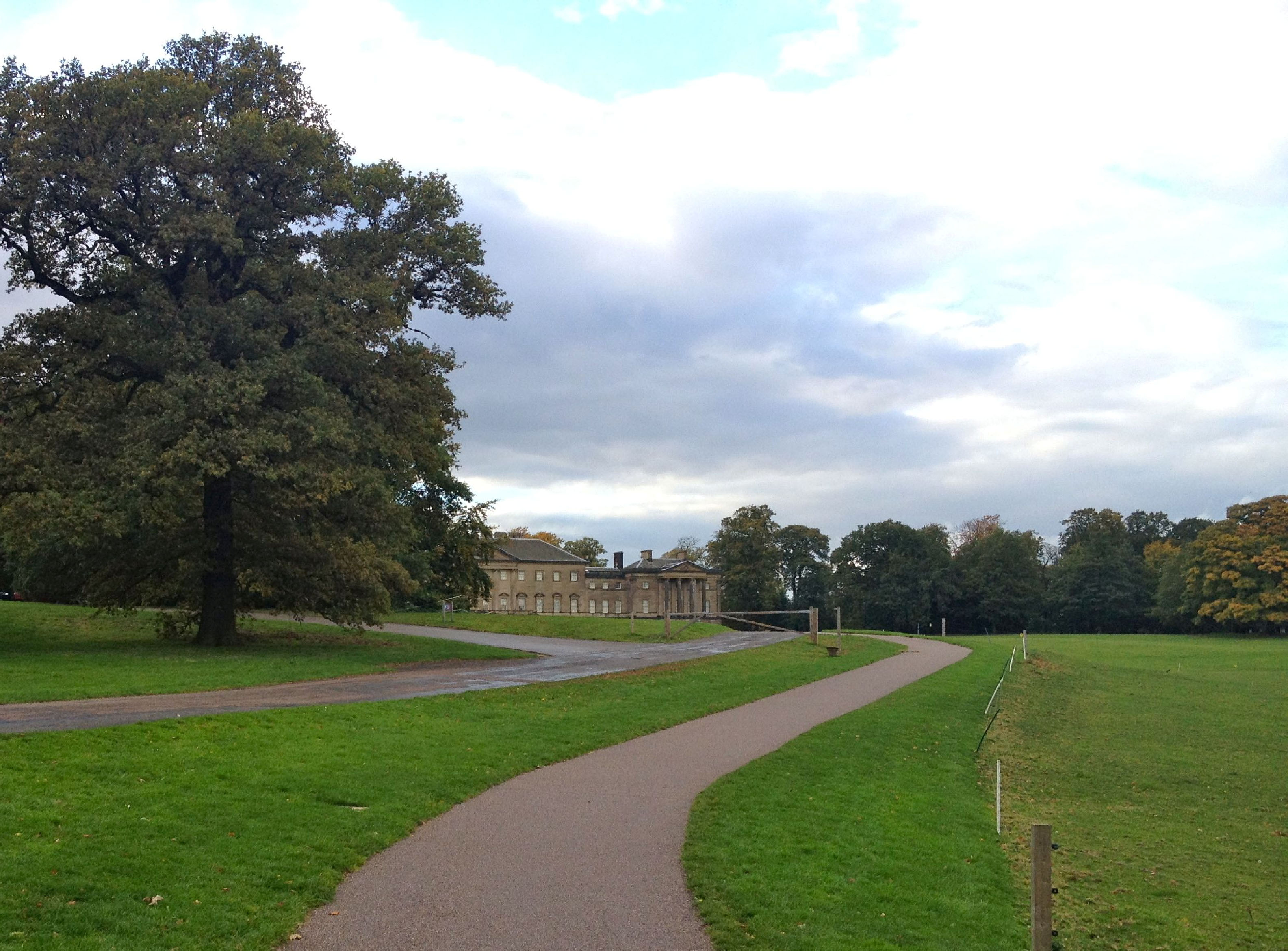Many visitors to Central Library are curious to know what the oldest book in our collection might be. In recent months we have been fortunate enough to find out a great deal of new information about a very special item in our Rare Books collection.
According to notes from the 1960s, the medieval manuscript was thought to date from the early 13th century and contains text from Peter Comestor's bible history. However, a visit from Peter Kidd, an independent manuscripts scholar in residence at the Getty Research Institute last Summer, revealed much more about this item and cast it in a whole new light.
The book consists of two thick oak boards, now separated, but with wide skin thongs still present. Inside are two gatherings of leaves, one with sewing thread still intact, and several more individual leaves. The Latin text includes vices and virtues, sermons, medieval "distinctions" or lists of biblical words and concepts with definitions, and treatises on biblical passages. The fact that the thick oak board cover is still together with the leaves is in itself rare and unusual. There are tiny wormholes in the wood, and the nail that held the leather strap to close the book can still be seen.
What was found on the back of the first page, beside the table of contents, gave us a suddenly vivid picture of what the manuscript was and where it had come from. A single line reads "de S(an)c(t)o Oswaldo. de Nostel" meaning "Belonging to St Oswald's, Nostell".

The Augustinian priory of Nostell in Yorkshire, England, was founded in the early 12th century and dedicated to St Oswald, an Anglo-Saxon King of Northumbria. John Burton’s Monasticon eboracense: and the ecclesiastical history of Yorkshire, 1758, which the Library also holds a copy of, describes the priory as follows:
"The place in which this priory was founded is said to have been very woody and full of game of all kinds; and having been chosen from its retiredness by a few hermits, they built themselves a little hall, and an oratory or church…"
The way that the text is arranged on the page, suggests that the manuscript dates from as early as 1200, making it certainly the oldest book in the Library. Although it is not elaborately illuminated, there are passages that have been highlighted as important by manicules (pointing fingers). Peter Kidd casts further light on what we can learn about the owners of the book:
"Knowing what books were owned by a medieval institution such as Nostel Priory can tell us a lot about that institution, especially if they contain unusual texts. It can tell us about their intellectual curiosity and sophistication, for example, and their willingness to embrace new ideas. It can also tell us about its network of contacts with other institutions because in order for a library to own a text, a librarian first had to know that it existed and then either borrow someone else's copy from which to make their own copy (printing would not be invented until the mid-15th century) or else find an existing copy available for purchase.”

The priory was surrendered to Henry VIII in 1540, during the dissolution of the monasteries, and gradually, the ruins of the buildings were dismantled by subsequent landowners. The present-day Nostell Priory is an 18th-century house owned by the National Trust and is the family home of Lord and Lady St Oswald. Mark Newman, archaeological consultant for the National Trust, has worked on excavations at the site and has uncovered foundations of the medieval priory to the left of the present building, as seen in the photograph below. His research has shown that ruins of the buildings were still standing as late as 1780.
The fact that the book is English also makes it rare, as so many were destroyed during the dissolution of the monasteries. Careful checking has revealed that no other manuscript is known to survive from this important priory, although two later printed books from its library exist.
Items in the Rare Books Collection are available for viewing by prior appointment only. Please call (213) 228 7350 or email rarebook@lapl.org for more information.

